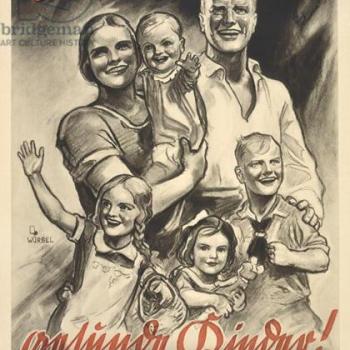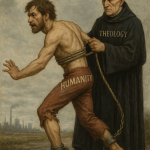I recently came upon a video in an article titled This Is What Happens When The Public Sees A Woman Abusing A Man. The video runs through a scenario of public domestic violence twice, first with the man abusing his female partner and second with the woman abusing her male partner. In the video, several individuals ultimately step in and stop the male-on-female abuse, but no one steps in to stop the female-on-male abuse.
When this topic comes up, one explanation for the different response tends to be physical differences in size between men and women. In other words, if a man is physically abusing a woman, he is likely larger than her and capable of causing her some very serious harm. In contrast, if a woman is physically abusing a man, she is likely smaller than him and thus not capable of causing him serious harm unless he lets her by not protecting himself. Or, to put it differently, there is a different power differential at play, and people can sense that.
But we know from work with female victims that many women put up with an abusive situation even when they technically could leave, or fight back. While the abuser being physically larger and intimidating does often play a role, the dynamics of abuse are about far, far more than that. Some male victims of domestic violence may have partners who are larger and stronger, and even a smaller partner can be physically intimidating. But beyond this, there are a myriad of psychological reasons that may prevent a male victim from getting out of an abusive situation or from fighting back even when capable of doing so.
That males as a group tend to be physically stronger may be helpful in understanding why many people respond differently to female-on-male violence than they do to male-on-female violence, but it should not play a role in determining how seriously we take female-on-male domestic violence. Many public perceptions about female-on-male domestic violence—especially the perception that a physically larger male can’t actually be abused—need correcting. Domestic violence is wrong, period, and physical size alone is often irrelevant to the dynamics of abuse.
I don’t know much about the Mankind Initiative, the UK group that created this video, except that they organized to provide support for male victims of domestic violence. Wikipedia states the following about the organization:
The organisation is committed to challenging harmful gender based domestic violence policies and ensuring help is available to all, regardless of gender, race or sexual orientation. It strongly believes men and women should work together to tackle the issue of domestic violence, that gender politics need to be removed from the issue and victims should be treated as individuals.
I applaud the group’s efforts to provide support for male victims of domestic violence, but I do think it’s important to understand the role gender can and does play in this issue. After all, I would argue that it is largely because of our culture’s deep patriarchal roots that female-on-male domestic violence is often not taken as seriously as male-on-female domestic violence. This may seem counterintuitive, but we have these ideas that to be masculine is to be strong and unafraid, and as a result men who are victimized often lack both rhetorical or physical space for processing or speaking of their experiences or getting help. To be feminine, in contrast, is to be sensitive and in need of protection, which provides more rhetorical and physical space for processing, speaking, and getting help.
The more we break down these gendered ideas and see people as people, equally deserving of respect and protection, the better we will be able to address domestic violence in all of its forms—but to do that we have to understand what these gendered ideas are, and the role they currently play.
Several years ago, Teen Mom reality TV star Amber Portwood physically assaulted her boyfriend, Gary Shirley, on camera and in front of their one-year-old daughter. MTV did not intervene, did not report the domestic violence, and aired it as it occurred. This probably would not have been the case had it been Gary who physically assaulted Amber.
When the episode aired, numerous Teen Mom fans called the police in Amber’s hometown, who viewed the footage as released and then arrested Amber. Amber was charged with felony domestic violence and ultimately received two years of probation with numerous conditions. (If you’re wondering where our nation’s priorities lie, Amber ultimately did spend 17 months in prison, but that had more to do with subsequent drug offenses than it did with her violations of her probation requirements.) (Also, I don’t know how Amber’s sentence for felony domestic violence stacks up to what Gary would have received had their roles been reversed; that would likely depend on the judge.)
Why do I bring up Amber Portwood? Because, I suppose, I feel like this story reveals both that we’re making progress on this issue (Amber was in fact arrested, charged, and sentenced) and how far we still have to go (MTV failed to report the violence or do anything to stop it, and probably would have acted differently had Gary been the perpetrator).
I have two children, a daughter and a son. I’d like to imagine that they will come to adulthood in a world where they will both have the language and support they need to recognize and protect themselves from domestic violence and abuse.














